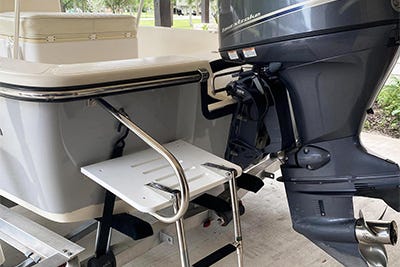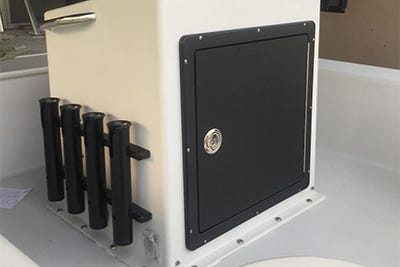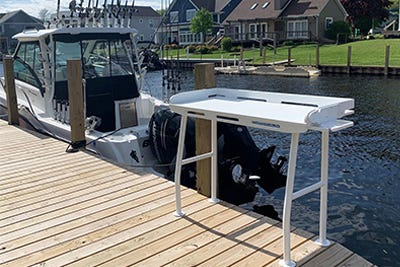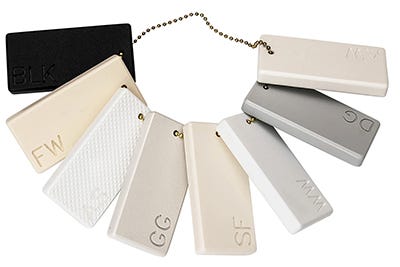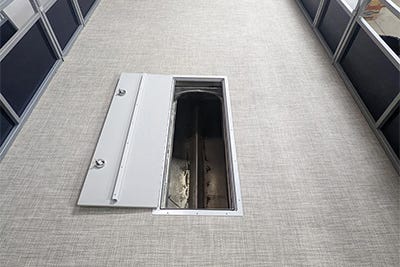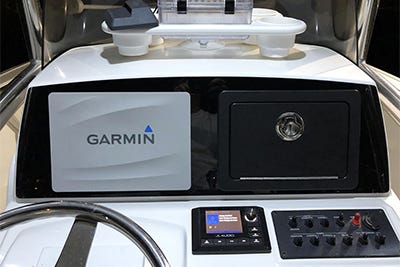

When it comes to withstanding harsh marine environments, it’s hard to beat King StarBoard for durable components and boat customizations. However, as versatile as StarBoard is, there is a lot of confusion about when to use it versus other plastic materials — particularly its rigid, glossy cousin, acrylic.
We deal with the specific characteristics of acrylic in part one of this series, and here we will look specifically at the benefits, limitations, and most common uses of King StarBoard.
Contents
- 1. The Basics
- 2. Key StarBoard Characteristics
- 2.1 Easy fabrication:
- 2.2 Durability:
- 2.3 Matte Finish:
- 2.4 Easy cleaning and maintenance:
- 2.5 Slip-Resistance:
- 2.6 Ideal cutting surface:
- 2.7 Color Options:
- 2.8 Wide application envelope:
- 3. Common Uses for King StarBoard
- 4. Drawbacks of StarBoard
- 4.1 Flexibility:
- 4.2 Color Limitations:
- 4.3 Finish and texture:
- 4.4 Weight:
- 4.5 Expense:
- 5. The Summary
The Basics
King StarBoard is a specially formulated UV-stabilized, high-density polyethylene that is produced as a dense plastic sheet and can be used to build hatches, tackle stations and many other components that improve the functionality of your boat.
While StarBoard is a stiff material, it is softer and more flexible than acrylic. StarBoard offers DIYers a simple material that is as functional as it is easy to work with. Very few materials offer the longevity and weather resistance that StarBoard does.
Key StarBoard Characteristics
If you are planning a DIY project for your boat, choosing the right material is critical. StarBoard is not going to give you the same glossy, high-end look that acrylic can offer, but it shines in other ways. Consider these characteristics when thinking about your project:
Easy fabrication:
StarBoard is much easier to work with than acrylic, and is a simpler option than fiberglass and gelcoat solutions. The relative softness of the material allows you to use standard woodworking tools and techniques, though it is important to use higher quality blades and drill bits to avoid excessive heat.
Unlike acrylic, StarBoard cuts cleanly (with a good blade), and does not require post-cut polishing.
Starboard, which is softer and less brittle than acrylic, can be fabricated with standard woodworking tools and techniques, making is a better materials for DIYers.
Durability:
StarBoard is incredibly durable, even more durable than acrylic. It is one of the few materials that is nearly impervious to harsh UV exposure.
StarBoard can be marred with a knife blade but is virtually impossible to break, dent or chip.
Acrylic is durable too but can be damaged by prolonged UV exposure and many household cleaning products. It is also more brittle than StarBoard and can be broken by impacts.
Ideal for heavy-duty applications like swim platforms, step pads, deck hatches, and fish cleaning tables.
Matte finish:
StarBoard has a textured, matte finish on both sides that is unobtrusive and effectively hides scratches and other imperfections.
Positioned well, it can complement glossy gelcoat with a contrasting finish. Acrylic’s glossy finish is more attractive in some applications but also requires more care.
Easy cleaning and maintenance:
StarBoard is virtually maintenance free. Unlike acrylic, there is no limitation on the types of cleaners you can use. Stain resistant by nature, StarBoard will look nearly the same after years of use.
If it does become stained, a variety of cleaners — including Soft Scrub, household bleach, Magic Eraser, citrus cleaners, and denatured alcohol — can be used.
Acrylic is highly stain resistant too, but it shows dirt, water spots and scratches more readily and is sensitive to ammonia-based cleaners, alcohol and abrasives. Unlike acrylic, there is no limitation on the types of cleaners you can use. Stain resistant by nature, StarBoard will look nearly the same after years of use.
Slip-resistance:
StarBoard’s lightly textured surface is relatively slip resistant and suitable for small hatches, but if more slip-resistance is needed, the material is also available with an aggressive nonskid finish — King StarBoard AS.
Acrylic is slippery, especially when wet, and unsuitable for use anywhere it will be stepped on.
Ideal cutting surface:
StarBoard’s durability makes a great cutting surface for fillet tables and bait stations and, due to the material’s relative softness, it will not dull or damage your knives.
StarBoard stands up to years of cutting and sun exposure yet won’t damage knives, making it the ideal material for filleting surfaces.
Color options:
StarBoard is always opaque and is available in a wide variety of whites, off-whites and grays that can match or compliment most production boat colors.
Wide application envelope:
Because of its durability and ease to work with, StarBoard is used for a wide variety of components on boats, both permanent and removable.
Except for unique situations, it really is the “go-to” material for most DIY projects.
StarBoard is available in a range of whites, off-whites, tans and grays to match or complement the gelcoat colors on most production boats.
Common Uses for King StarBoard
Because of the characteristics outlined above, many aftermarket boating and marine products use StarBoard as the primary material. Here are a few of the most common uses:
- Fillet tables and cutting boards
- Tackle stations and storage boxes
- Trim, countertops, tables, and frames
- Beverage holders
- Rod holders and racks
- Tool and equipment storage solutions
- Smaller access doors and hatches
- Spray rails
- Trolling motor supports
- Ski locker lids
- “Sacrificial” mounting surfaces for transducers and bracket-mounted electronics
- Low-gloss, textured dash panels
- Trailer bunk slides
- Grab rails
Drawbacks of StarBoard
While StarBoard is durable, versatile and relatively inexpensive, it does have limitations and drawbacks. Consider these carefully before selecting StarBoard for your project:
Flexibility:
StarBoard is resilient and won’t break, but it does flex. That makes it a poor choice for large doors, hatches, or poorly supported surfaces. In deck hatches, StarBoard can “give” a bit underfoot.
It won’t break, but you can feel it flexing. Keep in mind, however, that for certain applications StarBoard can be stiffened by fastening aluminum U-channels to the back or underside.
In larger hatches, StarBoard’s inherent flex makes it give slightly underfoot, but aluminum stiffeners can counteract the flex.
Bonding issues:
As a general rule, glues will not stick to StarBoard. When mounting StarBoard to another surface or to another piece of StarBoard, it must be mechanically fastened using screws or other hardware. StarBoard can be welded using a plastic welder, but even then, mechanical fasteners are generally recommended for a stronger joint.
Color limitations:
Similar to adhesive limitations, StarBoard does not take paint well. It’s available in eight colors — whites, off-whites, tans, grays and black — but if none of those match your gelcoat exactly, painting isn’t an option.
Finish and texture:
Because of its textured matte finish, StarBoard cannot give you the “high-end” glossy look that acrylic can for certain projects. This is particularly important to consider for high visibility areas such as consoles, where dash panels, switch panels and console doors are very noticeable.
StarBoard (black door at right) lacks the glossy, refined look of acrylic (background panel), which many boat owners prefer.
Weight:
While somewhat lighter than acrylic, StarBoard is a high-density polyethylene, and that “high density” translates to weight. StarBoard is heavier than marine plywood of the same thickness.
Depending on your application and weight tolerances, you may want to consider lighter plastic products that can meet your requirements, such as King StarLite and expanded PVC.
Expense:
StarBoard is a lower cost alternative to acrylic, but far from inexpensive. For projects that are not visible or may not require StarBoard’s durability and strength, other materials such as expanded PVC or marine plywood can be a more economical option.
Summary
StarBoard is one of the most versatile, durable and user-friendly materials for marine-related projects. With standard woodworking tools, you can quickly and easily enhance the functionality and look of your boat.
Whether you are replacing worn parts or adding new components, StarBoard’s weather resistance and near-zero maintenance characteristics make it a good choice for most projects. However, it is important to know its limitations; limited stiffness, poor paint and glue adhesion, weight, cost, and texture all need to factor into your decision.


